Ornamental Spine Tattoo: Designs, Meanings, and Tips for 2025
Ornamental spine tattoos are a stunning and increasingly popular form of body art, blending intricate patterns with the body’s natural contours. These tattoos, known for their geometric shapes, floral motifs, and symmetrical designs, make a bold statement along the spine. This article explores the artistry, symbolism, and practical considerations of ornamental spine tattoos.
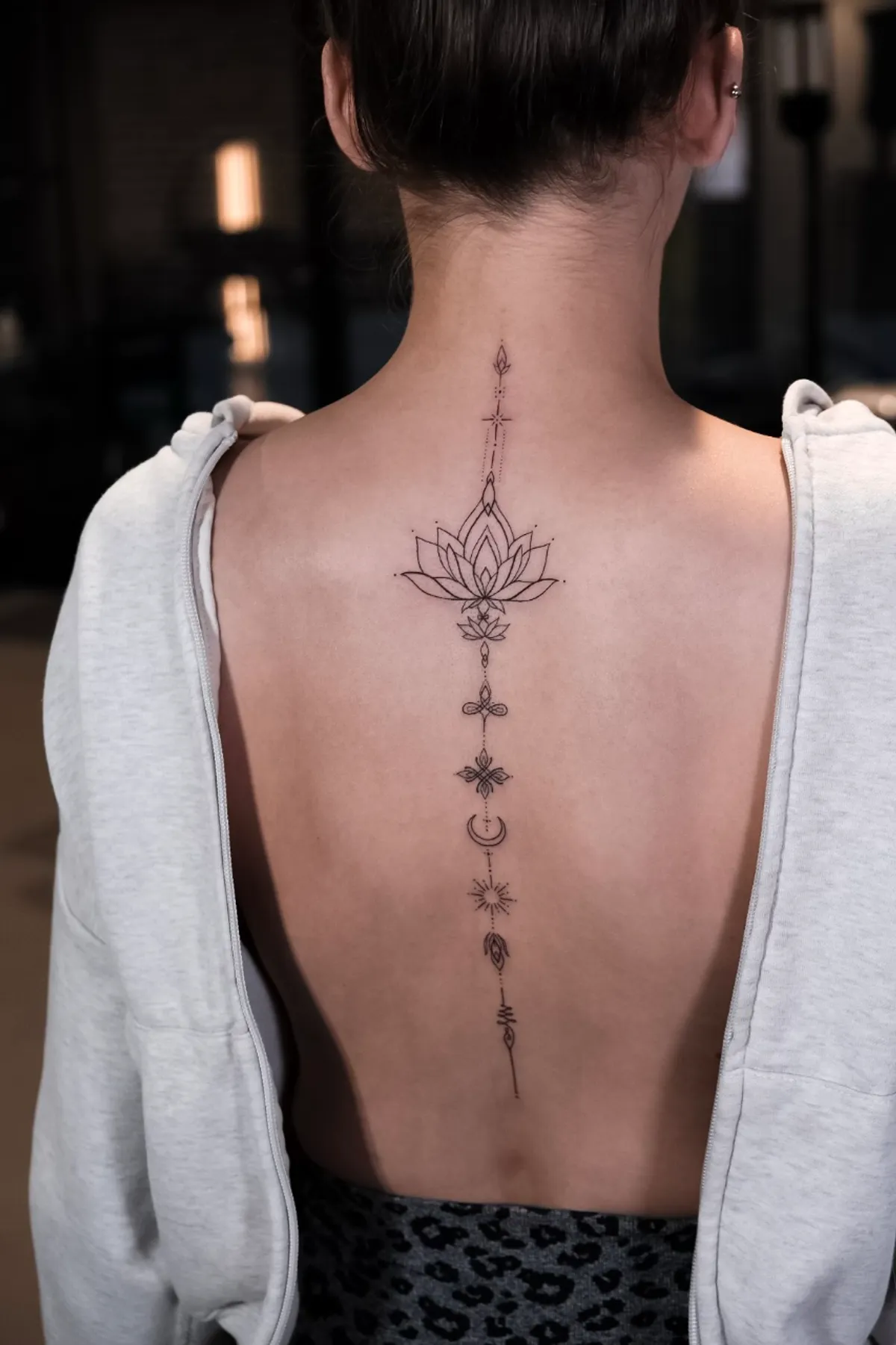
What Are Ornamental Spine Tattoos?
Ornamental spine tattoos feature elaborate, symmetrical designs that follow the spine’s vertical alignment. Inspired by tribal, Polynesian, and henna traditions, these tattoos emphasize patterns like mandalas, dotwork, and fine linework. Their unique placement and aesthetic appeal make them a top choice for those seeking a meaningful, visually striking tattoo.
The History and Cultural Significance of Ornamental Spine Tattoos
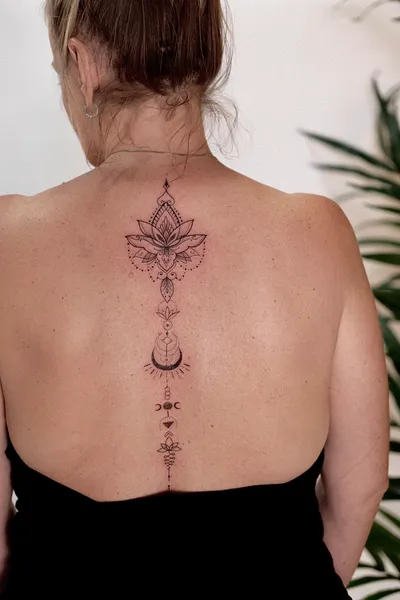
Ornamental tattoos trace their roots to ancient cultures, where geometric and tribal designs held spiritual or societal meaning. For example, Polynesian tattoos symbolized status and heritage, while henna designs in South Asian cultures represented celebration and protection. The spine, as the body’s central support, often carries symbolic weight, representing strength, resilience, or alignment with chakras in spiritual contexts.
Modern ornamental tattoos gained popularity in the 2000s, driven by advancements in tattooing techniques and social media platforms like Instagram and Pinterest. Today, they blend traditional motifs with contemporary styles, appealing to diverse audiences.
Popular Design Elements in Ornamental Spine Tattoos
Ornamental tattoos are versatile, offering endless customization. Common elements include:
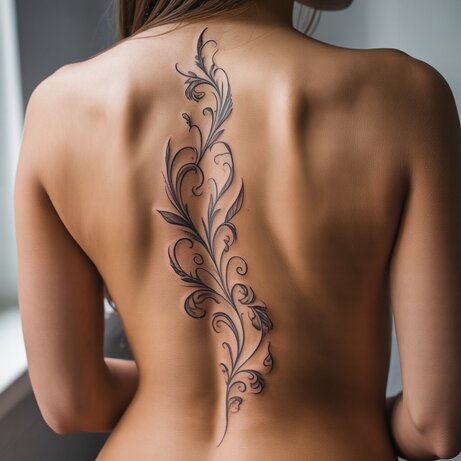
- Geometric Patterns: Mandalas, triangles, and hexagons create symmetry and balance, ideal for full-spine designs.
- Floral and Botanical Motifs: Lotus flowers, vines, and roses add elegance, symbolizing growth or beauty.
- Dotwork and Linework: Fine lines and stippling add texture and depth, enhancing the tattoo’s visual impact.
- Symmetrical Designs: Mirrored patterns complement the spine’s natural shape, creating a cohesive flow.
- Cultural Inspirations: Elements from Celtic knots, Maori tribal art, or henna designs add cultural depth.
These designs can range from minimalist single-line tattoos to elaborate, full-spine pieces, catering to varied tastes.
Why Choose an Ornamental Spine Tattoo?
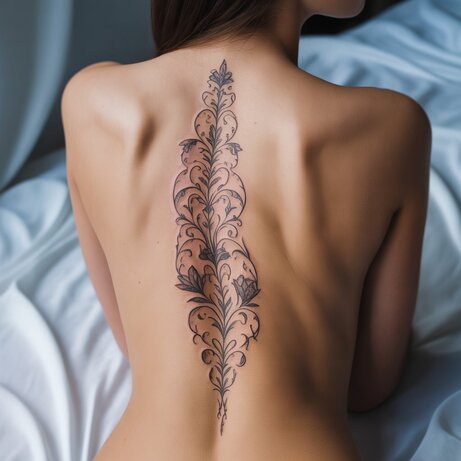
The spine’s unique placement offers several advantages:
- Aesthetic Appeal: The vertical canvas enhances elongated, flowing designs.
- Symbolism: The spine symbolizes strength, making it a meaningful choice for personal expression.
- Versatility: Designs can be subtle or bold, fitting both minimalist and intricate preferences.
- Gender-Neutral: Ornamental tattoos appeal to all, with customizable elements like birth flowers or zodiac symbols.
Practical Considerations for Ornamental Spine Tattoos
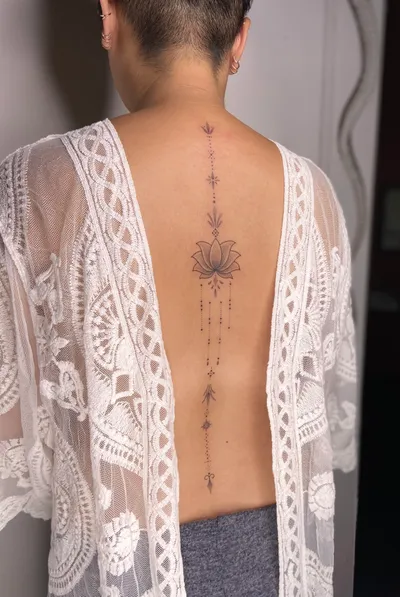
Before getting an ornamental spine tattoo, consider these factors:
- Pain Level: The spine is a sensitive area due to its proximity to bones and nerves. Discuss pain management, like numbing creams, with your artist.
- Design Planning: Collaborate with an artist skilled in ornamental or geometric tattoos to ensure the design aligns with your body’s contours.
- Healing and Aftercare: Spine tattoos are prone to friction from clothing. Clean with fragrance-free soap, apply aftercare ointment, and avoid sun exposure for 2–4 weeks.
- Time and Cost: Full-spine tattoos may require 10–20 hours across multiple sessions, costing $500–$3,000+ based on complexity and artist expertise.
- Artist Selection: Choose an artist with a strong portfolio in ornamental tattoos. Check reviews and consult to align on your vision.
2025 Trends in Ornamental Spine Tattoos
As of 2025, ornamental spine are trending due to:
Maintaining Your Ornamental Spine of Tattoo
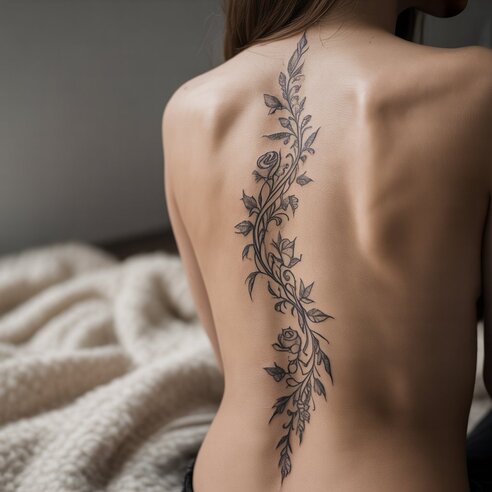
To keep your tattoo vibrant:
- Aftercare: Clean gently, moisturize, and avoid scratching during the 2–4 week healing period.
- Sun Protection: Apply SPF 30+ sunscreen to prevent fading, especially for dotwork or colored designs.
- Touch-Ups: Schedule touch-ups every 2–5 years to maintain clarity and vibrancy.
